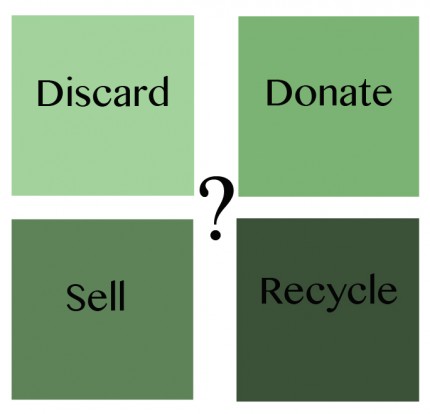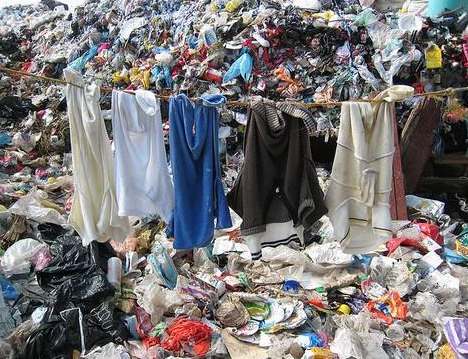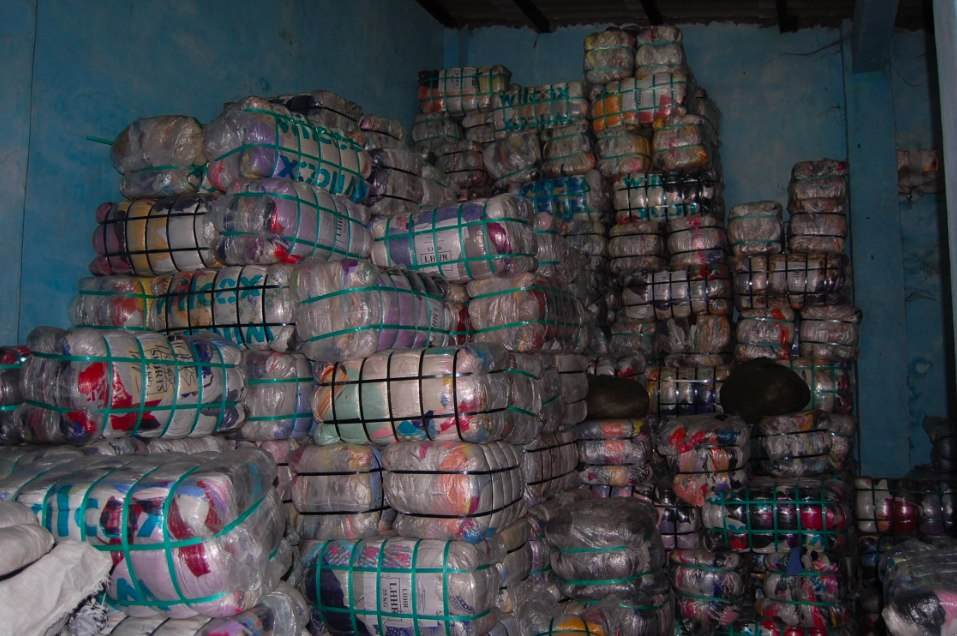I thought I’d be talking about product development this week, but after a good question from Kim (from A Very Sweet Blog), I’ve shifted my focus. She asked what happens to clothes that the outlets can’t sell them. It’s a great question and one I wasn’t entirely sure how to answer. After some research, I think I have some answers. While I couldn’t find the particulars of what happens to outlet clothes, but I did find out quite a bit about unwanted clothing in general. Considering the fact that we get rid of 2 billion pounds of clothing per year, I think this is a much bigger issue to discuss (Source).
Source
Discard: In the most disturbing of actions, clothes are thrown away and/or destroyed. The clothes end up in landfills, either as whole garments or shreds. In most recently came to light in the past few years when H&M and Walmart were called out for their wasteful process (Source). Despite the backlash, many retailers continue to ruin their unsold garments. Why? Most don’t want to taint their brand image with their collections floating around off-price stores, like TJ Maxx or Marshall’s.
Donate: A more favorable option for unwanted clothing is for retailers to donate it. This could be to Goodwill, Salvation Army, or other non-profit organizations. This means that quality clothing could be used and still sold at a profit for a good cause. The donations are also tax-deductible. Again, the reason most retailers choose not to go down this road is because they don’t want their image ruined.
Source
Sell: A practice not everyone knows about is to sell clothing to third-world countries. You may have heard the joke about seeing third-world children wearing last year’s Superbowl loser’s shirts. And for the most part, it is true. This is the best piece I found that centrals on the trade in West Africa. This is a popular practice for charity shops when they need to clear out merchandise to make more room. Trans-America, is an organization that recycles damaged clothes and sells them to developing countries. It’s considered a win-win because the clothes are being sold and they are being used.
Recycle: As the green movement continues to evolve, recycling is becoming more prominent in the conversation of unwanted clothing. There are a few different options for recycling. Some companies shred the clothes and re-use the material for new garments. Some, like Trans-America, shred damaged clothing to use them for rags. And some, like TerraCycle, use discarded clothes to make new items entirely.
I think the bigger conversation we should be having is why we have so much clothing. Clothing should not be disposable. Even donating your clothes to charity should be considered. Only 15-20% of these clothes are ever purchased (Source). It’s truly astounding. It really makes me think about what I purchase and what it’s lifecycle will be, even beyond my use.
Sources:
Did you know these practices existed?









Pingback: Beauty Bytes: February 1, 2013